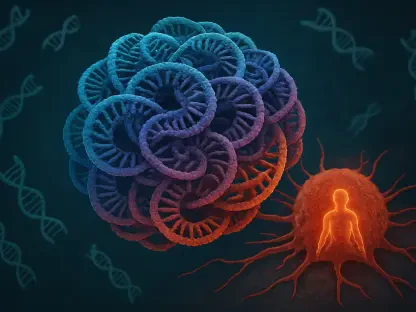In a quiet corner of Millbank, Australia, a hidden environmental threat emerged recently, sparking an urgent response from local authorities and biosecurity experts. The discovery of the Yellow Fever Tree, scientifically known as Vachellia xanthophloea, an invasive species classified as prohibited matter under Australian regulations, raised alarms due to its potential to disrupt local ecosystems and agricultural productivity. Known for its rapid growth and aggressive spread, this plant can quickly dominate landscapes, outcompeting native flora and posing significant challenges to land management. The collaborative efforts of Bundaberg Regional Council and Biosecurity Queensland have not only addressed this immediate danger but also highlighted the critical importance of vigilance and swift intervention in safeguarding natural resources. This situation serves as a stark reminder of how invasive species can silently infiltrate communities, underscoring the need for awareness and proactive measures to protect the environment from such threats.
Combating an Environmental Threat
Early Detection and Rapid Response
The initial sighting of the Yellow Fever Tree by the Bundaberg Regional Council’s Biosecurity team marked the beginning of a critical operation in Millbank. This invasive plant, capable of growing between 10 to 25 meters tall with distinctive greenish-yellow bark and feathery leaves, was identified on a local property, prompting immediate action. Within a short span, a coordinated task force removed 31 mature plants from four prohibited Vachellia species across the site and nearby areas. Environment and Natural Areas portfolio spokesperson Cr Gary Kirk commended the team’s quick response, noting that early detection was pivotal in preventing the species from establishing a foothold. Under Australian law, sightings of such prohibited matter must be reported within 24 hours, a regulation that proved essential in this case. The rapid mobilization of resources and expertise ensured that the threat was contained before it could spread further, demonstrating the effectiveness of preparedness in biosecurity management.
The success of this operation underscores the importance of having trained personnel who can recognize invasive species at a glance. Mistaking the Yellow Fever Tree for a similar but non-restricted plant like the Mimosa Bush, which is common in the region, could have delayed the response. Public education on identifying key features—such as the yellow flowers and the smooth bark that reveals green underneath when rubbed—plays a vital role in supporting these efforts. The incident also highlights how critical timing is when dealing with invasive species; a delay of even a few days could have allowed the plants to seed and spread, complicating removal efforts. By acting decisively, the Council and Biosecurity Queensland set a precedent for handling such environmental challenges, reinforcing the need for constant vigilance in areas vulnerable to ecological disruptions caused by non-native species.
Ongoing Monitoring and Prevention Strategies
With the immediate threat neutralized, attention has now shifted to ensuring the Yellow Fever Tree does not re-emerge in Millbank or surrounding regions. Long-term monitoring plans have been established, with authorities committing to oversee the affected areas for several years to detect any signs of regrowth or new infestations. This sustained effort is crucial, as invasive species often leave behind seeds or roots that can lie dormant before sprouting again under favorable conditions. The commitment to regular inspections and follow-up actions reflects an understanding that biosecurity is not a one-time task but a continuous responsibility. Additionally, the rarity of Yellow Fever Tree detections in Australia—only three known instances—emphasizes the importance of these measures to prevent a rare problem from becoming a widespread issue.
Beyond monitoring, preventive strategies are being prioritized to bolster defenses against future invasions. Collaboration between local councils and state agencies remains a cornerstone of this approach, ensuring resources and expertise are readily available when needed. Community involvement is equally essential, as residents are often the first to notice unusual plants in their surroundings. Encouraging the public to report suspicious vegetation to Biosecurity Queensland or the Council enhances the network of eyes on the ground. This proactive stance, combined with ongoing education about invasive species, aims to build a resilient community capable of safeguarding its natural environment. By integrating these efforts, the region hopes to maintain its ecological balance and protect agricultural interests from the disruptions caused by invasive flora.
Building Community Awareness
Educating Residents on Biosecurity Risks
Raising awareness among Millbank residents about the dangers posed by invasive species like the Yellow Fever Tree has become a key focus following the recent removal operation. Many people may not realize the impact that a single non-native plant can have on local ecosystems, from displacing native species to altering soil conditions and affecting water availability. Educational initiatives are being rolled out to help individuals identify prohibited plants and understand the legal obligations surrounding their reporting. Cr Gary Kirk has stressed the importance of community vigilance, urging locals to stay alert for unfamiliar vegetation in their gardens or nearby areas. By equipping the public with knowledge about the distinctive traits of invasive species, authorities aim to create a first line of defense against future threats.
This educational push also addresses the challenge of misidentification, as many invasive plants bear similarities to harmless native or non-restricted species. For instance, distinguishing the Yellow Fever Tree from the Mimosa Bush requires attention to specific details, which can be taught through workshops, informational materials, and online resources. Empowering residents to act as stewards of their environment fosters a sense of shared responsibility. The goal is to cultivate a culture where reporting potential biosecurity risks becomes second nature, ensuring that threats are caught early. Such community-driven efforts complement the work of professional biosecurity teams, creating a comprehensive approach to environmental protection that benefits both the natural landscape and agricultural productivity in the region.
Fostering a Collective Responsibility
The collaborative triumph in Millbank revealed the power of collective action in addressing environmental challenges, a lesson that continues to resonate with the community. Beyond individual awareness, fostering a sense of shared duty among residents, landowners, and local businesses is vital for long-term biosecurity success. Encouraging open communication with authorities when unusual plants are spotted can significantly reduce response times, limiting the potential damage caused by invasive species. This shared responsibility extends to maintaining clean and monitored properties, as neglected areas can serve as breeding grounds for prohibited flora. The recent incident serves as a reminder that everyone has a role to play in preserving the region’s ecological integrity.
Reflecting on the operation, it’s clear that the partnership between the Council, Biosecurity Queensland, and the public was instrumental in achieving a positive outcome. Building on this momentum, future initiatives will likely focus on strengthening these ties through community engagement programs and regular updates on biosecurity concerns. Encouraging active participation ensures that the lessons learned from this event are applied to prevent similar threats down the line. By nurturing a united front, Millbank can stand as a model for how communities can work hand-in-hand with authorities to protect their environment, ensuring that the swift actions taken in the past pave the way for a secure and sustainable future.









